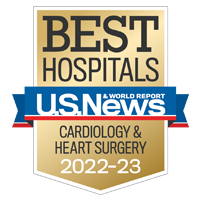
Supraventricular Tachycardia
Supraventricular tachycardia includes a diverse group of abnormal rhythms originating from the atria, the upper chambers of the heart, or the atrioventricular (AV) node, a small mass of tissue located in the wall of the right atrium. The AV node slows the impulse coming from the atria before it passes through to the ventricles. Atrioventricular (AV) nodal reentry tachycardia is one example of supraventricular tachycadia.
Our Approach to Supraventricular Tachycardia
Over the past decades, UCSF has helped pioneer breakthroughs in the understanding and treatment of arrhythmias, or heart rhythm disorders, such as supraventricular tachycardia. We offer comprehensive evaluations to pinpoint the source of the arrhythmia, as well as the most innovative treatments available to restore the heart's normal rhythm. Our experienced team succeeds in curing 95 to 98 percent of patients with supraventricular tachycardia.
While providing specialized, tailored care is our primary focus, we are also dedicated to finding new treatments through research. Patients who choose to participate in clinical trials may have access to experimental therapies, devices or medications that might work better for them than the established options.
Awards & recognition
-

Among the top hospitals in the nation
-

One of the nation’s best in cardiology & heart surgery
UCSF Health medical specialists have reviewed this information. It is for educational purposes only and is not intended to replace the advice of your doctor or other health care provider. We encourage you to discuss any questions or concerns you may have with your provider.





